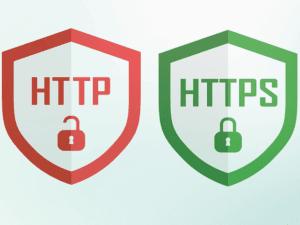
HTTP vs HTTPs
Understanding the distinction between HTTP vs HTTPS is crucial for grasping the fundamentals of web security. HTTP, which stands for Hypertext Transfer Protocol, is the standard protocol that facilitates the transfer of data across the internet. In contrast, HTTPS, or Hypertext Transfer Protocol Secure, is an enhanced, more secure version of HTTP that employs encryption to safeguard data during transmission.
What is HTTP?
The Hypertext Transfer Protocol (HTTP) serves as the backbone of the World Wide Web. It comprises a comprehensive set of rules and guidelines that dictate how data is exchanged between web browsers and servers. HTTP is responsible for various essential functions, including loading web pages, executing API calls, and facilitating other forms of data transfer. Without HTTP, the seamless browsing experience that users expect would not be possible.
What is an HTTP request?
HTTP messages can be categorized into two primary types: requests and responses. HTTP requests are generated by a user’s web browser as they navigate and interact with a website. For instance, when a user clicks on a hyperlink, their browser initiates an HTTP request directed at the server hosting the website. In response, the server processes this request and sends back an HTTP response, which contains the content of the requested web page. This interaction is fundamental to how users experience the web.
What is HTTPS?
HTTPS stands for Hypertext Transfer Protocol Secure. It represents a more secure iteration of HTTP, incorporating encryption techniques to protect data from being intercepted by malicious entities. When a website employs HTTPS, the URL will begin with “https://” rather than “http://”, signaling to users that their connection is secure. This distinction is vital for business owners who prioritize the safety of their customers’ information.
How does HTTPS work?
HTTPS utilizes Transport Layer Security (TLS) to encrypt HTTP requests and responses, ensuring that data remains confidential during transmission. TLS employs a public key infrastructure (PKI) to establish a secure connection between a client (such as a web browser) and a server. The server’s public key is utilized to encrypt the data being sent, while the client’s private key is used to decrypt it upon receipt. This encryption process guarantees that only the intended recipient can access and read the transmitted data, significantly enhancing security.
What are the benefits of HTTPS?
The adoption of HTTPS offers numerous security advantages over its predecessor, HTTP, including:
- Data confidentiality: HTTPS encrypts data, making it nearly impossible for malicious actors to intercept and read sensitive information.
- Data integrity: HTTPS ensures that data remains unaltered during transmission, protecting it from tampering or corruption.
- Authentication: HTTPS verifies the identity of the server, allowing users to confirm that they are communicating with the legitimate website they intended to visit.
These benefits are particularly important for business owners who handle sensitive customer information, such as credit card numbers or personal details.
Why should I use HTTPS?
It is imperative for all websites, especially those that manage sensitive data, to implement HTTPS. This protocol is now the standard for secure web browsing, and it plays a critical role in safeguarding user privacy and security. By using HTTPS, businesses can build trust with their customers, demonstrating a commitment to protecting their data from potential threats.
HTTP vs HTTPs Summary
In summary, HTTPS is a more secure version of HTTP that employs encryption to protect data from being intercepted by malicious actors. The transition from HTTP to HTTPS is not merely a technical upgrade; it is a necessary step for any business that values the security of its customers’ information. All websites, particularly those that handle sensitive data such as credit card numbers or passwords, should prioritize the implementation of HTTPS to ensure a safe browsing experience for their users.
For more information, questions, or assistance with your business IT systems, contact PTS today. We are here to help you navigate the complexities of web security and ensure that your business remains protected in the digital landscape.

